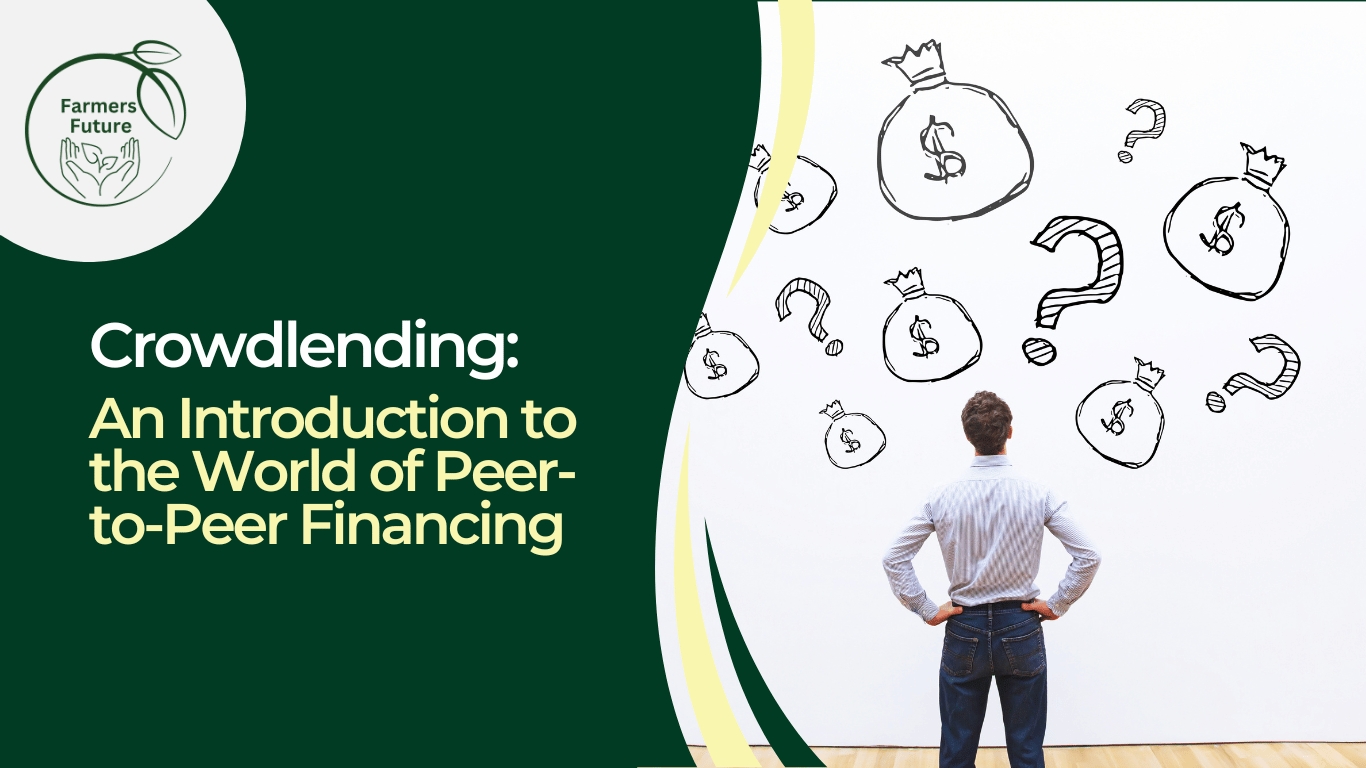A New Way of Financing: What is Crowdlending?
Crowdlending, also known as Peer-to-Peer Lending (P2P Lending), is an innovative form of financing where a group of individuals – the „crowd“ – lends money to a business or individual. Unlike traditional bank loans, financing here is provided by numerous investors who contribute their capital. Online lending marketplaces like lend.ch act as intermediaries, facilitating the swift and uncomplicated processing of such loans.
How Does Crowdlending Work?
In crowdlending, private or institutional investors come together to lend money to individuals or businesses. These loans are usually facilitated through online platforms that also conduct credit evaluations and assessments. Once enough investors commit to a project, the loan is granted and disbursed. The borrower repays the crowd in installments, along with interest, which serves as a return for the investors. The online platform manages the payment transactions and ensures smooth operations.
Why Crowdlending is Attractive for Investors
Crowdlending offers several advantages to investors. The returns can be significantly higher compared to traditional investment forms, making it an attractive option for those seeking alternative investment opportunities. Another benefit is risk diversification, as multiple investors finance a single loan, distributing the risk among many shoulders. Platforms like lend.ch provide comprehensive credit evaluations and assessments, enabling investors to make informed decisions.
Erik Simon, CEO of Enhanced Finance Solutions Ltd., emphasizes that crowdlending offers investors a chance to participate in innovative projects and potentially earn higher returns. With a background in insurance and economic studies at the University of St. Gallen, Simon specializes in alternative financing and understands the risks and opportunities in this sector well.
Risks and Challenges in Crowdlending
Like any investment, crowdlending carries risks. Despite careful credit evaluations and risk assessments, there is always the possibility of default. Crowdlending is often considered subordinate capital, meaning that in the event of a borrower“s insolvency, investors‘ claims are treated as secondary. Erik Simon advises investors to carefully scrutinize the projects they invest in and ensure they rely only on reputable platforms that conduct stringent assessments.
Another risk is the lack of regulation in some countries. In Germany, for example, there is no unified regulatory framework for crowdlending. Therefore, investors should ensure that the platforms they invest through are overseen by a trusted regulatory authority. Simon advocates for independent and qualified advice to achieve sustainable improvements for investors and minimize risks in crowdlending.
Crowdlending vs. Crowdfunding: What is the Difference?
Although crowdlending and crowdfunding have similar names, there are significant differences. Crowdlending involves loans where the borrower repays the borrowed money, often with interest. Crowdfunding, on the other hand, involves financing a project or product where the crowd does not expect repayment. Instead, supporters often receive a thank-you or a product as a reward, without guaranteed financial compensation.
Crowdfunding has become well-known in Germany through platforms like Kickstarter, where people fund projects because they believe in the idea or want to be part of a community. Crowdlending is more financial in nature, with investors expecting a return. Erik Simon highlights that crowdlending investors should have a clear expectation of returns, while crowdfunding often focuses on the ideological value.
Crowdlending: An Alternative for Businesses and Investors
For businesses, crowdlending offers an interesting alternative to traditional bank loans. Applying for a loan from a bank can be time-consuming and bureaucratic. Crowdlending enables faster financing, which is particularly attractive for small and medium-sized enterprises. Online platforms act as intermediaries, ensuring efficient processing.
For investors, crowdlending provides an opportunity to diversify their capital and potentially achieve higher returns. Lower entry amounts also allow younger investors or those with less capital to enter this form of financing. However, investors should keep the risks in mind and ensure they do not rely on capital they urgently need.
Crowdlending as a Modern Investment Opportunity: The Financing Revolution with a Personal Touch
Crowdlending is more than just an alternative to traditional bank financing – it is a revolution in the investment world. The ability to invest directly in projects gives investors a personal touch that they cannot find elsewhere. Instead of just passively investing, they can be part of a bigger picture and consciously choose projects that matter to them.
The flexibility and diversity of crowdlending offer investors a broad range of opportunities, from safer investments with lower returns to riskier projects promising higher profits. The transparency of the platforms allows informed decisions, and the variety of projects gives investors the chance to tailor their investment portfolios individually.
However, despite all the advantages, investors should not forget that crowdlending carries risks. The lack of government protection and varying laws require careful examination of platforms and projects before making a decision. Erik Simon, an expert in the banking and economic sector, recommends thorough examination of projects and platforms to ensure a safe and rewarding investment.
Crowdlending is a modern form of financing attractive to both businesses and investors. The ability to lend money without the intermediary of a bank opens new paths of financing and offers investors the chance of higher returns. At the same time, this form of financing carries risks that should be carefully weighed. Nevertheless, crowdlending remains an exciting and dynamic way to enter a new era of financing – an era where investors can invest independently and with personal engagement. For those ready to take the plunge and rediscover the financial world, crowdlending could be the perfect starting point.
Author: Erik Simon, CEO – Managing Director, Enhanced Consulting Solutions Ltd.
About Enhanced Finance Solutions CY Ltd.
Erik Simon is a seasoned professional in the banking and economic sector with global experience. After training as an insurance salesman and studying economics at the University of St. Gallen, he specialized in accreditation and alternative financing at Bear Stearns in London. Currently, as CEO of Enhanced Finance Solutions Ltd., he advocates for independent, qualified advice for countries and institutions to achieve sustainable improvements by realigning financial structures.
Farmers Future is an innovative project that has set itself the task of combining sustainability and profitability in agriculture. Farmers Future offers people the unique opportunity to participate as partners in various sustainable agricultural projects and to profit from the sales proceeds. The aim is to make a positive contribution to the future of agriculture by promoting environmentally friendly farming methods and involving partners directly in the value creation process. At Farmers Future, transparency, sustainability and shared success are at the heart of our joint activities.
Contact
Farmers Future
Eric Simon
Nikos Nikolaidis 19
8010 Paphos
Phone: +35797786080
E-Mail: 
Url: https://farmers-future.net/
Die Bildrechte liegen bei dem Verfasser der Mitteilung.







